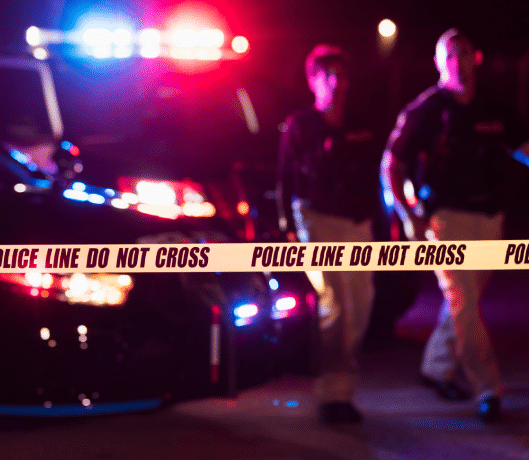What Is Police Reform?
Police reform is a critical topic in the U.S. that evokes strong emotions. In the wake of George Floyd and other high-profile killings by law enforcement officers, police reform has become a much-debated issue. Since 2020, legislatures around the country have reviewed thousands of bills. However, efforts have slowed, despite police brutality and misconduct posing serious problems for communities.
Were you or a loved one a victim of police brutality?
Attorneys that work with Police Brutality Center may be able to assist you.
"*" indicates required fields
Content Last Updated: November 24, 2025
Police reform has become a hot-button issue in America. Police Brutality Center is regularly asked, “What is police reform?” The main mission of the police should be to serve and protect its citizens. However, widespread police misconduct and brutality have undermined citizens’ confidence in law enforcement. With wrongdoing and distrust becoming the norm, reforms are imperative.
More than a thousand people are killed each year by police. While police brutality disproportionately affects certain groups, especially minorities, every American should be concerned with improving the police department as an institution.
Police Brutality Center is committed to providing the hard truths about police violence, educating you on your civil rights, and providing ways to get involved to promote police reform efforts.
What Is Police Reform?
Police reform comprises measures that federal, state, and local governments can implement to address imperfections in the police system and improve our institutions. The idea of police reform acknowledges that our society needs a police presence to operate safely and efficiently. However, it also recognizes the flaws within the current police system. Rather than argue for eliminating the institution of police, proponents of police reform suggest improvement methods to restore trust in departments, protect citizens’ rights, and ensure community safety.
Common Cases of Police Misconduct
Police violence is a real problem. A look at recent police brutality statistics sheds light on the urgent need for police reform in the U.S.
For example, these statistics include the following chilling facts:
- In 2022, police in the U.S. killed people on 355 out of 365 days. On a given day, there was a 97.26 percent chance police would kill at least one person.
- Police kill approximately 1,000 people in the U.S. each year.
- The Chicago Police Department kills black people at a rate of 8.6 per million versus white people at 0.3 per million.
- Police in the U.S. kill people at least three times more than Canadian police and at least 60 times more than police in England and Wales.
- In the first 24 days of 2015, U.S. police killed more people than England and Wales during the previous 24 years.
There has been a streak of high-profile police killings in recent years. Civilian killings by police are steadily rising:
- 2022: 1,096 killings
- 2021: 1,055 killings
- 2020: 1,021 killings
- 2019: 1,004 killings
- 2018: 996 killings
- 2017: 987 killings

Examples of recent high-profile police killings include the following victims:
- Daunte Wright
- George Floyd
- Eric Garner
- Breonna Taylor
- Jordan Edwards, 15 years old
- Tamir Rice, 12 years old
- Fanta Bility, 8 years old
The shooting of Michael Townsend in Portland, Oregon, was not a high-profile national case, but it garnered significant local attention and led to a wrongful death lawsuit against the City of Portland.
The police have a duty to apprehend criminal suspects, but they do not have the authority to pass judgment. Every person apprehended by the police deserves a chance to defend themselves in court. Even one unnecessary police killing is too many. Police reform cannot bring these victims back, but it can help prevent future tragedies and unnecessary suffering.
They have to take a stand. They have to get involved in local politics. They have to inform their legislators, their local elected officials. They have to have a relationship and a dialogue with the police department. Many police departments around the country do make some effort to have a community affairs bureau where they interact with the community and they take feedback from the community. And remaining silent doesn’t help taking action, at least is doing something and making sure that the police department hears the community side of what they’re experiencing and having that conversation can help bridge the gap and hopefully bring people together and make it less often that you see instances of excessive force and brutality.
Types of Police Reform
Police brutality is a systemic issue in the U.S. Multiple ways exist to address this vast problem. Various suggested reforms range from defunding the police to instituting training initiatives. Police reform does not necessarily mean choosing only one reformation method. Governments can implement multiple techniques simultaneously to reduce police brutality and support reform.
Training Initiatives
Training initiatives are one potential method of police reform. Proposed initiatives range from virtual reality training focusing on de-escalation and implicit bias to requiring police officers to obtain a four-year bachelor’s degree in an area focusing on human behavior, criminology, and sociology.

Policy Changes
Policy changes are another way to reduce police brutality and killings. This includes passing legislation banning the use of no-knock search warrants and chokeholds. Another proposed policy change is to divert mental health calls away from the police. Instead, proponents suggest redirecting these crisis calls to mental health clinicians trained to deal with these scenarios.



Demilitarization
The practice of police militarization in the U.S. began decades ago. It involves the federal government making military weapons available to state and local police departments. Initially, police militarization was meant to arm police for the country’s war on drugs. Later, proponents of militarization justified it as a way to prevent terror attacks.
Advocates for demilitarization claim that the police force has no real need for military weapons today. They argue that militarization allows police to regard citizens as enemy combatants, not community members.
Defunding the Police
Defunding the police does not mean abolishing police services or leaving the police institution underfunded. Rather, it refers to reallocating funding from the police to other local governmental agencies to allow the police to focus strictly on policing, thereby improving safety. In particular, defunding the police suggests allocating funding to social workers and mental health professionals to reduce unnecessary police violence.
Recent Police Reform Legislation
Since the murder of George Floyd in 2020, every state has introduced legislation regarding police reform and excessive force. As of 2022, legislatures considered more than 4,500 police reform bills. In that time, at least 25 states have enacted legislation limiting police conduct, including neck restraints and excessive force.
Some states have created new duties requiring officers to report on or intervene in cases of excessive force and other rights violations.
Since 2020, at least 30 states have enacted bills concerning police certification and decertification. In that time, at least 39 states have enacted laws related to officer training. Common officer training topics include the following:
- De-escalation
- Mental health
- Implicit bias
- Bias reduction
- Human trafficking
Breonna Taylor’s death triggered legislation surrounding “no-knock” search warrants, with 14 states passing laws regulating these warrants.
Notable state and federal police reform laws include the following:
- George Floyd Justice in Policing Act of 2020: This federal act grants power to the Civil Rights Division of the Justice Department to subpoena police departments to investigate patterns of bias and misconduct.
- Executive Order on Advancing Effective, Accountable Policing and Criminal Justice Practices to Enhance Public Trust and Public Safety: This measure calls for clarifying and improving standards for police activities.
- Breonna’s Law: Kentucky House Bill 21 ended “no-knock” search warrants across the state and mandated alcohol and drug testing for police officers involved in deadly incidents.
- 2021 NM H 4: This New Mexico law removed qualified immunity for police who violate a person’s civil rights. Qualified immunity protects public officials, including police officers, from personal liability for violations unless they violate clearly established law.
While the initial influx of police reform legislation was encouraging, three years later, interest has slowed. Some states struggle to implement meaningful police reforms. Police reform must be an ongoing effort, with even one unnecessary death being unacceptable. To continue with the mission of police reform, organizations need your support.
Well, it brings to the spotlight incidences of abuse, and it holds the government responsible for compensating people that have been wrongfully injured because of police brutality. And so what that typically triggers is some type of review of police policies and procedures. And the goal is to make sure that having the consequence of a lawsuit really encourages police departments around the country to make sure that they do everything that they can to train their officers to try to avoid the use of excessive force.
How to Support Police Reform
To support police reform, you can stay up-to-date with proposed legislation by tracking local police reform bills. Additionally, you can contact your local representatives to show your support for these proposals.
You can also report local police misconduct to help hold officers accountable. To report civil rights violations, you can contact:
U.S. Department of Justice
Civil Rights Division
Criminal Section, PHB
950 Pennsylvania Avenue, NW
Washington, DC 20530
(202) 514-8336
www.usdoj.gov
To report police brutality or police abuse of rights, you may write to the above address or contact the nearest Federal Bureau of Investigation office. If you are a victim of police brutality, you may also want to look into getting legal help.
If you have questions regarding police brutality or police reform, please contact us.
